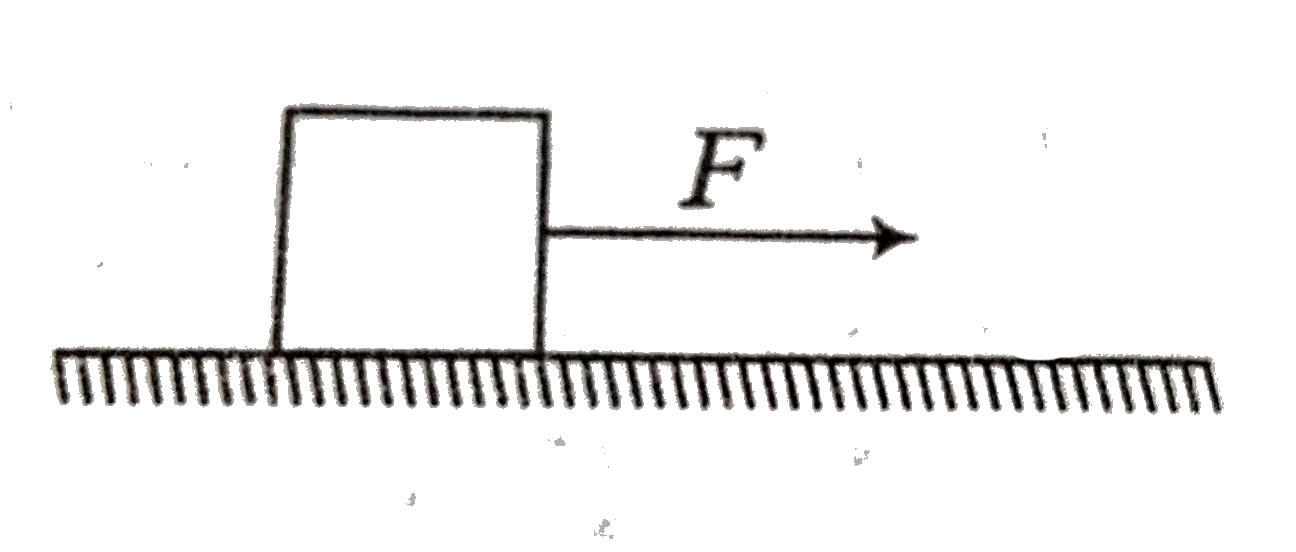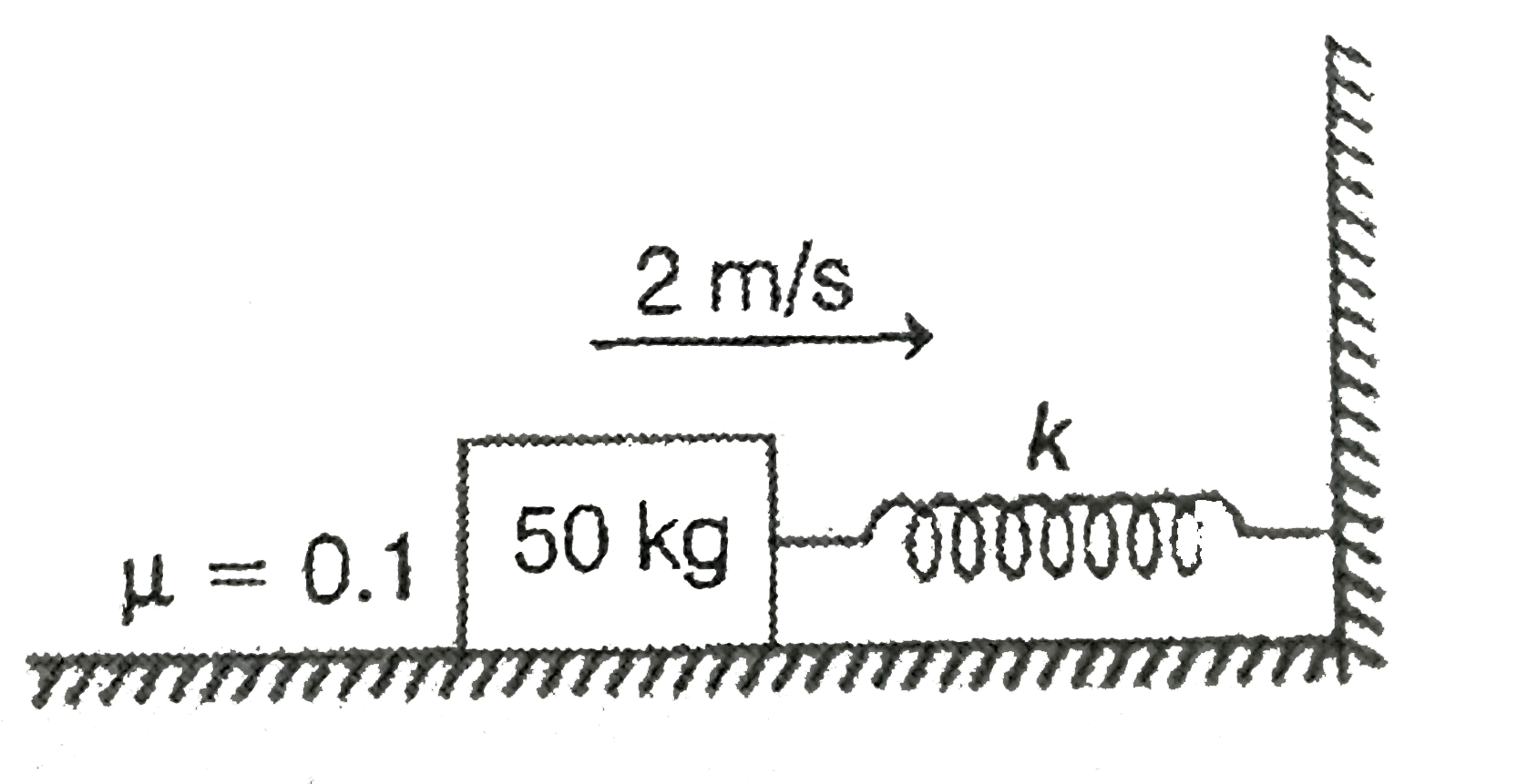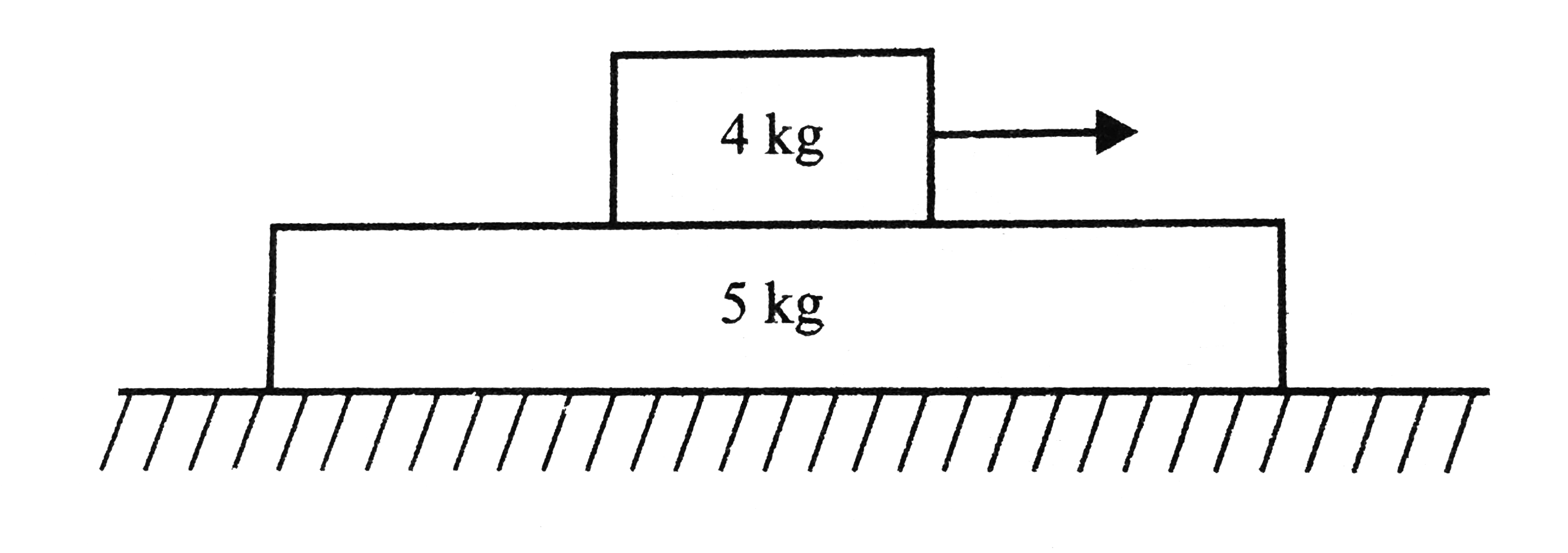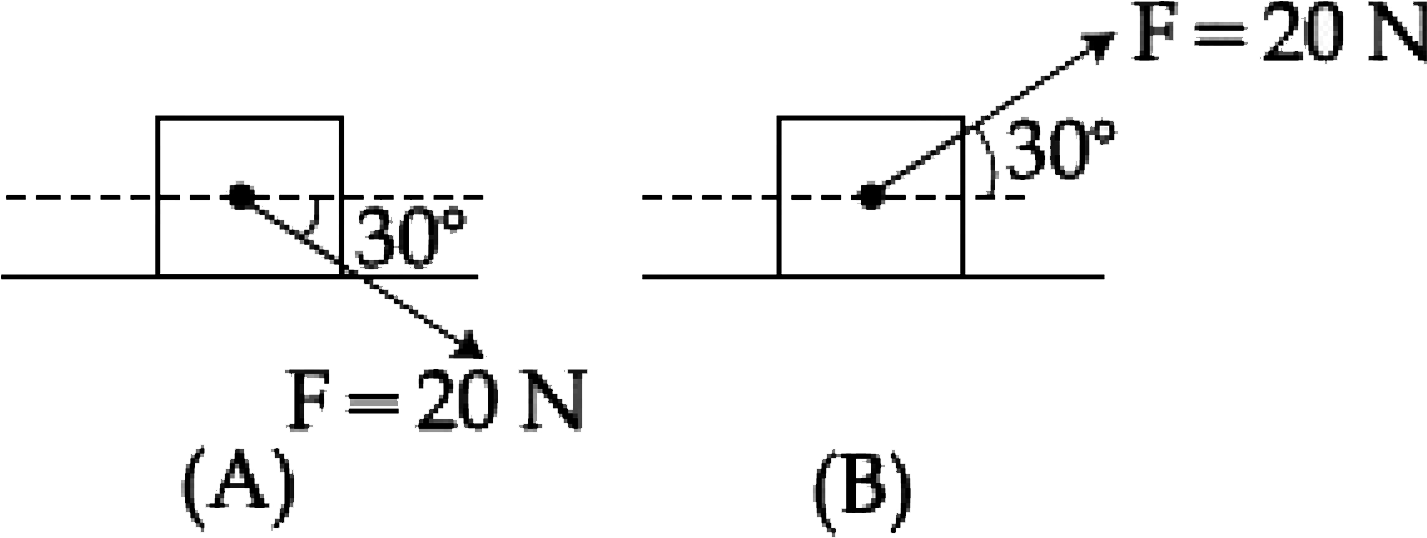A horizontal force F pulls a 20 kg box at a constant speed along a rough horizotal floor. The coefficient of friction between the box and the floor is 0.25. The work done by force F on the block in displacing it by 2 m is
49 J
98 J
147 J
196 J
The correct Answer is:B
To solve the problem, we will follow these steps:
Step 1: Calculate the frictional force
The frictional force (f) can be calculated using the formula:
f=μ⋅m⋅g
where:
- μ is the coefficient of friction (0.25),
- m is the mass of the box (20 kg),
- g is the acceleration due to gravity (approximately 9.8 m/s²).
Substituting the values:
f=0.25⋅20kg⋅9.8m/s2
f=0.25⋅196N
f=49N
Step 2: Determine the applied force
Since the box is moving at a constant speed, the applied force (F) must equal the frictional force to maintain equilibrium. Therefore:
F=f=49N
Step 3: Calculate the work done by the force
The work done (W) by the force is given by the formula:
W=F⋅d
where:
- F is the applied force (49 N),
- d is the displacement (2 m).
Substituting the values:
W=49N⋅2m
W=98J
Conclusion
The work done by the force F on the block in displacing it by 2 m is 98 joules.
---
The frictional force (f) can be calculated using the formula:
f=μ⋅m⋅g
where:
- μ is the coefficient of friction (0.25),
- m is the mass of the box (20 kg),
- g is the acceleration due to gravity (approximately 9.8 m/s²).
f=0.25⋅20kg⋅9.8m/s2
f=0.25⋅196N
f=49N
Since the box is moving at a constant speed, the applied force (F) must equal the frictional force to maintain equilibrium. Therefore:
F=f=49N
The work done (W) by the force is given by the formula:
W=F⋅d
where:
- F is the applied force (49 N),
- d is the displacement (2 m).
W=49N⋅2m
W=98J
The work done by the force F on the block in displacing it by 2 m is 98 joules.
Topper's Solved these Questions
- WORK, ENERGY AND POWERBOOK - DC PANDEY ENGLISHCHAPTER - WORK, ENERGY AND POWEREXERCISE - CHECK POINT 6.2
20 Videos
- WORK, ENERGY AND POWERBOOK - DC PANDEY ENGLISHCHAPTER - WORK, ENERGY AND POWEREXERCISE - CHECK POINT 6.3
10 Videos
- WORK, ENERGY AND POWERBOOK - DC PANDEY ENGLISHCHAPTER - WORK, ENERGY AND POWEREXERCISE - MEDICAL ENTRACES GALLERY
33 Videos
- WORK, ENERGY & POWERBOOK - DC PANDEY ENGLISHCHAPTER - WORK, ENERGY & POWEREXERCISE - Level 2 Comprehension Based
2 Videos
- WORK, POWER AND ENERGYBOOK - DC PANDEY ENGLISHCHAPTER - WORK, POWER AND ENERGYEXERCISE - E Integer Type Questions
11 Videos
Similar Questions
A 10 g block placed on a rough horizontal floor is being pulled by a constant force 50 N. Coefficient of kinetic friction between the block and the floor is 0.4. Find work done by each individual force acting on the block over displacement of 5 m.

View SolutionA block of mass 50 kg is projected horizontal on a rough horizontal floor. The coefficient of friction between the block and the floor is 0.1. The block strikes a light spring of stiffness k=100N/m with a velocity 2m/s, the maximum compression of the spring is

View Solution
Knowledge Check
A crate of mass 100 kg is at rest on a horizontal floor. The coefficient of static friction between the crate and the floor is 0.4, and the coefficient of kinetic friction is 0.3 . A force F of magnitude 344 N is then applied to the crate, parallel to the floor. Which of the following is true ?
AThe crate will accelerate across the floor at 0.5m/s2.BThe static friction force, which is the reaction force to F as guaranteed by Newton 's Third Law, will also have a magnitude of 344 N.CThe crate will slide across the floor at a constant speed of 0.5m/s.DThe crate will not move.
A block of 10kg is pulled at a constant speed on a rough horizontal plane by a force of 20N. Calculate the coefficient of friction ?
View SolutionA block of mass m is pulled by a force of constant power P placed on a rough horizontal plane. The friction coefficient between the block and the surface is μ. Then
View SolutionA block of mass m is kept over another block of mass 2 m and the system rests on a smooth horizontal surface. The coefficient of friction between the blocks is 0.50. Find the work done by the force of friction on the smaller block by the bigger block during a displacement d of the system, when a force mg is applied to the lower block.
View SolutionA large slab of mass 5kg lies on a smooth horizontal surface, with a block of mass 4kg lying on the top of it. The coefficient of friction between the block and the slab is 0.25. If the block is pulled horizontally by a force of F =6N, the work done by the force of friction on the slab, between the instants t=2s and t=3s, is (g=10ms−2)

View SolutionA block of mass 5kg is (i) pushed in case (A) and (ii) pulled in case (B), by a force F=20N, making an angle of 30∘ with the horizontal, as shown in the figures. The coefficient of friction between the block and floor is μ=0.2. The difference between the accelerattion of the block, in case (B) and case (A) will be : (g=10ms−2).
 .
.
View SolutionA block of mass m is stationary on a rough inclined plane making an angle θ with the horizontal. Find the contact force between block and the plane
View SolutionA wooden block of mass M resting on a rough horizontal surface is pulled with a force T at an angle q to the horizontal. If m is coefficient of kinetic friction between the block and the surface, the acceleration of the block is
View Solution
